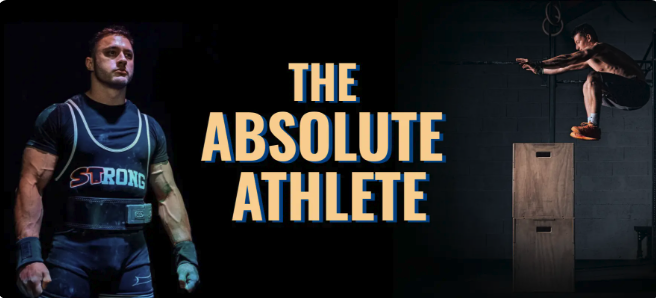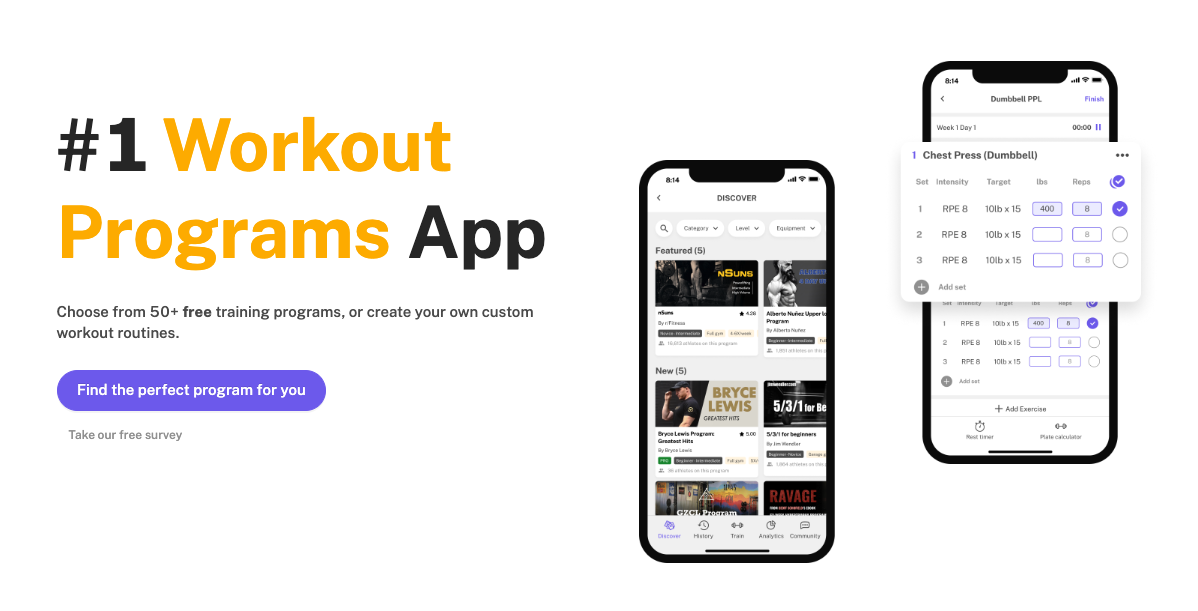How are Calisthenics Athletes so Strong?
Written by The Boostcamp Editors
How calisthenics athletes make massive strength gains with little to no equipment
Many times, we go to the gym and select a workout program that caters to size and strength. Whether the goal is building muscle mass through training for bodybuilding, powerlifting, or Olympic Weightlifting, a workout program for these will usually include compound movements such as the barbell squat, the bench press, and the deadlift, as well as isolation movements that will place more of an emphasis on specific muscle groups like the biceps and triceps and the calves. However, have you ever thought of incorporating traditional bodyweight exercises into your workout routine to get stronger and increase muscle size? Many people ignore the idea of using bodyweight exercises in their workout routine, thinking that compound exercises with free weights are much better for training.
Let’s take a look at what calisthenics are, who should use them, and the benefits they can bring to your physique.
What are Calisthenics?
Calisthenics are exercises that almost entirely rely on body weight, meaning no barbells, dumbbells, or machines. In terms of equipment, they can include pull-up bars or Roman chairs for bodyweight dips, but again rely mostly on bodyweight. Calisthenics allow for the development of the following areas:
Strength
Endurance
Flexibility
Coordination
Despite the benefits calisthenics bring to all of those areas, including strength and muscular endurance, you do not see them utilized in many weight training programs for sports like bodybuilding or powerlifting. Sure, you see the pull-ups, push-ups, and dips appear in these programs, but those athletes rely far more heavily on weighted movements, when in reality, calisthenic exercises like traditional exercises such as squats, dips, push-ups, and pull-ups can greatly help functionality and progression. However, beginners are recommended to start with basic exercises like squats, dips, push-ups, and pull-ups, and add more challenging moves as they get stronger.
Calisthenics are also a particularly popular thing, because they are so easy to do anywhere at any time. It does not matter if you are on vacation, traveling for work, or just in an area without a gym, you can still do calisthenics and get a great workout in.
Another thing worth mentioning is calisthenics athletes are freakishly strong, even though they train far differently than the typical bodybuilders or powerlifters. Despite doing mostly bodyweight workouts, calisthenics athletes may still be able to hit some crazy one rep maxes those heavy compound movements, or do a lot on the lat pulldown, and we are going to discuss why.
Why are Calisthenics Athletes so Strong

Alex Bromley, who has programs within the Boostcamp training app, dove into the reasons why calisthenics athletes are so strong. He brings up the example of Hadyn Wiseman, who also is represented on the Boostcamp app and sits at relatively low body fat and a solid body weight, and practices calisthenics, but is also an elite powerlifter. Hadyn used a lot of bodyweight movements that challenge coordination and force you to master your own bodyweight.
Alex goes on to say that the engagement of physical activity, calisthenics in particular, will tend to be ahead of people who discover sports like powerlifting and weightlifting later in life. The deep engagement of calisthenic movements is deeply beneficial to elite strength and performance sports, so learning those movements and mastering them at a young age will put you ahead of the game later on. He then goes on to emphasize the importance of developing a base when it comes to being an elite athlete, and you cannot just go right into a “narrow” training program.
Another reason that calisthenics athletes are so strong, Alex goes on to say, can partially be from genetics. If you look at Hadyn, he has a smaller frame, and it is easier for him to obtain a high strength to bodyweight ratio. Another example Alex shows is Hadyn’s explosive abilities, which sprout from his engagement in athletics at a young age.
To summarize Alex Bromley’s take on why calisthenic athletes are so strong, here are some key points:
There is a commitment to being physically great
A frame that is developed to accommodate a high strength-to-bodyweight ratio
Leverages that allow the athlete to make very good use of his lefts
Benefits of Calisthenics
Now, when it comes to maximizing the benefits that calisthenics bring, the best way to achieve your fitness goals is to utilize compound movements, meaning that they work multiple muscle groups at once. This promotes efficient muscle development and body control, allowing you to get a full-body workout in a short amount of time. Calisthenics athletes, like a lot of calisthenics athletes, do not concern themselves with isolating specific muscles, as their focus is on the overall strength and functionality of their body, mobility, flexibility, strength, and skill. This translates to better movement outside of training and in your daily life, making calisthenics the best way to improve your overall fitness and strength.
Just about every calisthenics exercise is a functional exercise, which means these exercises resemble real-world movement patterns that you do regularly. Here are some movements that calisthenics are made up of:
Pushing
Squatting
Hip hinging
Lunging
The functionality of calisthenic movements is another reason that these athletes are so strong when it comes to basic, weighted movements, such as the squat, bench, and deadlift. You also can divide up you workouts into different splits, such as the upper lower split or a push pull legs split.
Another benefit of calisthenics is that it promotes muscle growth, especially in the upper body. Calisthenics training can lead to significant muscle gain, particularly in the upper body rather than the lower body, as demonstrated by a study showing that fitness beginners can average a gain of 3kg (6lbs) of lean muscle in their first 3 months of training sessions. If beginners can maintain the same muscle building rate throughout the first year, they can expect to achieve around 12kg of muscle gain in a year. Incorporating important movement patterns such as pull-ups, push-ups, and exercises using your own body weight into your calisthenics routine can definitely help in achieving a bigger upper body and more lean muscle mass. One of the key aspects of a muscle-building workout is progressive overload, which means gradually increasing the stress placed on your body during exercise. By challenging your muscles with increasingly difficult variations of calisthenics exercises, you can ensure progressive overload and continue to stimulate muscle growth over time.
All snarky comments aside, engaging in calisthenics forces you to stay low body fat, which usually means a weaker lifter, but since you are developing more functional strength, you are developing a higher strength-to-bodyweight ratio.
Who Should do Calisthenics and When Should You Start?
When it comes to who should do calisthenics, there is no sole group that will benefit more than another. Calisthenics help you to better learn and master your own body, which transfers over to your strength in the gym with resistance training.
In terms of when to start calisthenics, there also is no preferred age. In the case of Hadyn Wiseman, he was doing gymnastics-like movements from a very young age and was lightyears ahead of other kids his age physically. Then when it came time to powerlift, Haydn excelled in the sport and became an elite athlete. That being said, and Alex Bromley covered it in his video, there are a lot of benefits to starting calisthenic movements at a young age.
Where to Find Bodyweight Workout Programs
If you want to find some solid bodyweight workout programs to follow and really test yourself, Boostcamp is the place to find a program for just about any style of training you can imagine. When you are looking for a program that will really push you to the limit and help you continue progressing in a linear fashion, look no further than the Boostcamp App.
There are plenty of free programs to choose from on Boostcamp, over fifty to be exact. When it comes to following a new workout program and seeing how you are progressing with it, you would want to find a platform that caters to your needs and guides you in the right direction. Boostcamp can help with that, and it can even help you to measure your progress, track your workouts, and continue with linear progression. You also do not have to choose from prewritten programs, you can create and customize your own program!
Calisthenics Wrap Up
So, why are calisthenic athletes so strong? You would think that guys who play around on the monkey bars wouldn’t be able to lift much, but it is certainly the opposite. Calisthenics forces a lifter to learn and master their body, and commit to staying fit. They also constantly use functional movements which undoubtedly transfers over to lifts in the gym.
Boostcamp has plenty of free programs that help with both strength and hypertrophy, be sure to check them out and follow Boostcamp on Instagram and subscribe on YouTube!


